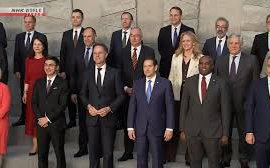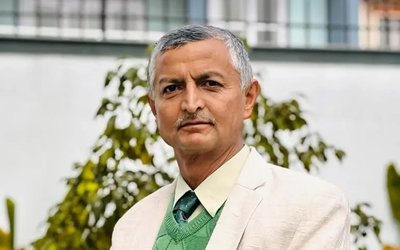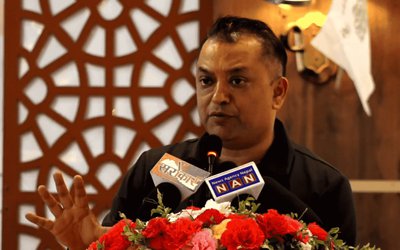Since the constitutional issue is primarily internal to Nepal, Kathmandu has to move towards accommodating Madhes. Likewise, Indian policy makers need to realise that any amount of coercive diplomacy, intended or unintended, declared or undeclared, has its limits.
India-Nepal relations have been trapped into an uncomfortable and undesirable bind. If the recent statements made by the two countries at the UN Human Rights Council meeting in Geneva – where Nepal’s Universal Periodic Review was up for discussion – are of any indication, the bind is getting from bad to worse.
This bind has been created and is being driven by untenable and irrational perceptions at two levels – between Kathmandu and the Madhes people, and between Kathmandu and New Delhi.
In Kathmandu’s assessment, the Madhesis who are agitating for inclusiveness and justice under the recently promulgated constitution do not deserve anything more than what they have already been given; i.e. two provinces and inadequate (disproportionate) representation. In the perception of Kathmandu’s rulers, the Madhesis are incapable of waging a sustained agitation; they are like “flies” that will run away just with a “few shots fired in the air”. They believe the Madhes leadership is fragmented, opportunist, and can be browbeaten or bought. The fact that the Madhes agitation has not been controlled even after more than two months and nearly fifty deaths, they believe, is primarily due to India’s support. If therefore, as is being argued, Kathmandu can force India to distance itself from the Madhes issue, the agitation will tire out and the issue would wither away.
Indian assumptions
As for Indian policy makers, they believe Kathmandu’s leaders took India for granted, ignoring New Delhi’s pleas for an inclusive constitution. They refused to honour promises made by them to the Madhesi and marginalised tribal (janjati) groups, and also to Indian leaders, that these groups will be taken on board. The constitutional process was fast tracked to deliver a pre-designed constitution ignoring the legitimate claims of the Madhes. Therefore, the Indian strategists assert, calibrated coercive diplomacy is the only instrument left with New Delhi to make Kathmandu see reason. Hence, not only disapproval of the new constitution and expressions of open support for Madhes, but also a calculated restrictive movement of essential good to Nepal by India has been woven into this diplomacy. New Delhi does not believe Kathmandu’s attempt to mobilise China is a viable and long-term option. It hopes, therefore, that eventually Kathmandu will be forced to see reason and seek ways to accommodate the Madhes. India also hopes that international pressure from elsewhere – particularly from the US, Japan and the European Union – will come into play to discourage Nepal from using the China option and persisting with its aggressive policy towards the Madhes.
There are obvious flaws in both these assessments. The Kathmandu leadership needs to realise that the social and political dynamics in the Madhes have been radically transformed, particularly since the 2005-06 Jan Andolan (Peoples’ Movement)-II. The so-called dhoti-clad Madhesis are now backed by aware, assertive and organised jeans-wearing youth. This generation has no stakes in accepting the domination of the Kathmandu based hill-upper castes and is willing to pick up arms and even raise the separatist flag if pushed to the wall. The Madhes-Maoist clash of 2007 was a clear indication of this kind of a change. Recall the breakaway of Matrika Yadav from the Maoist mother organisation and the rise of leaders like C.K. Rout to enhance Madhes identity. The Tharu leader, Vijay Gachhadar is being disowned by many of his rank and file because of his alliance with the Kathmandu rulers. Those Madhesi leaders who still hang on for political crumbs from the big parties dominating Kathmandu, are finding it difficult to visit their home constituencies in the Terai. This new and agitated Madhes will surely take help from India or any other source available, but will not be used as pawns in anybody’s strategic games. The sooner the Kathmandu rulers recognise this, and rework their approach towards Madhes, the better it is. The sharpening of the ethnic divide is not in the interest of Nepal’s unity, stability and progress, now or ever. There are umpteen instances to draw lessons from the neighbourhood and elsewhere for Nepal in this respect.
Likewise, Indian policy makers need to realise that any amount of coercive diplomacy, intended or unintended, declared or undeclared, has its limits.
The situation in Nepal today is not akin to 1988-89, when the trade and transit treaty had collapsed and the erstwhile king was whipping up anti-Indian nationalism. Post the 2005-06 Jan Andolan-II, Nepal is a different place. It is democratic, awakened, vibrant and assertive. To punish a whole population in order to put pressure on a powerful ruling coterie is counter-productive. A huge new constituency of India haters has been created in Nepal as a consequence of Modi’s coercive diplomacy. Even if the Beijing card is not immediately viable, opportunities have been opened for China in Nepal that may not give comfort to India in the long run. The international community for its own diverse reasons may not question India’s approach towards Nepal but its loud claims to carrying its smaller neighbours along have suffered credibility in the light of the pain being inflicted on ordinary Nepalis.
Urgent need to step back
In sum, both Kathmandu and Delhi have to stop pursuing their current approaches and must step back from their aggressive stances. Since the constitutional issue is primarily internal to Nepal, Kathmandu has to move towards accommodating Madhes. There are a set of constitutional amendments already registered by the outgoing Koirala government that need to be fast tracked and adopted for building confidence with the Madhesis. This will automatically facilitate the smooth flow of goods from India. This should also enable India to exercise whatever good-will it has with the Madhesis and other political constituencies in Nepal to keep their engagement productive and meaningful. The question of re-demarcating provincial boundaries is also not a really complex issue so long as inflated and hurt egos are not allowed to come in the way. The vested interests of a bunch of critical leaders in the dominating parties cannot be preserved and promoted at the cost of broader Nepali national interests. Madhes may be persuaded to take up the provincial boundaries re-demarcation issue under other provisions of the constitution (eg. the setting up of a designated commission) for the time being in response to representational accommodation through constitutional amendments, provided additional credible assurances of a sincere rethink on it in Kathmandu are extended. Other methods of resolving the demarcation issue may also be explored like seeking public opinion in the disputed districts or a mutually agreed arbitration mechanism.
During his first visit to Nepal, Prime Minister Narendra Modi had powerfully articulated the view that India has no desire to compromise Nepal’s sovereignty, independence or resources. This has to be reiterated again, publicly or even in writing, if Nepal wants to enter into a new treaty to that effect. This is needed because Nepal’s policy makers and strategic community are alleging that India has its eyes on the country’s national resources and sovereign independence. Nepal’s refusal to harness its hydro-water resources did not stop India from growing and it will not do so in future also. Nepal can keep its waters flowing if it finds profitable to do so. India also has to shed its preference and prejudice for a certain religious and ideological orientation in its Nepal policy. Until 2005-06, a Hindu and monarchical Nepal delivered nothing on India’s national interests. Most of India’s present security and strategic concerns in Nepal originated during that period. India has lived with a communist Nepal earlier and can very well do so now as also in future. If the Vietnamese communists can assert themselves against the Chinese communist for their national interests, why will the Nepali communist not do the same if need arises? The China card in Nepal’s hand becomes an option only when Nepal feels uncomfortable with India. India needs to be alert towards its security interests in Nepal and other neighbouring areas but an excessively security driven policy towards the neighbours is not always a smart thing to pursue.
S.D. Muni is Professor Emeritus, JNU and a Distinguished Fellow, IDSA
Courtesy The Wire (http://thewire.in/2015/11/08/india-and-nepal-must-step-back-from-the-precipice-14976/)
- What India Should, And Shouldn’t, Do In Nepal
- Jan 14, 2021
- With Election Over, Bhutan Can Woo China With India’s Blessing
- Oct 24, 2018
- China’s Shadow Loomed Over Nepal PM Oli’s ‘Successful’ India Visit
- Apr 10, 2018
- Left Alliance Now A Dominant Force In Nepal, But Faces A Tough Road Ahead
- Dec 17, 2017
















